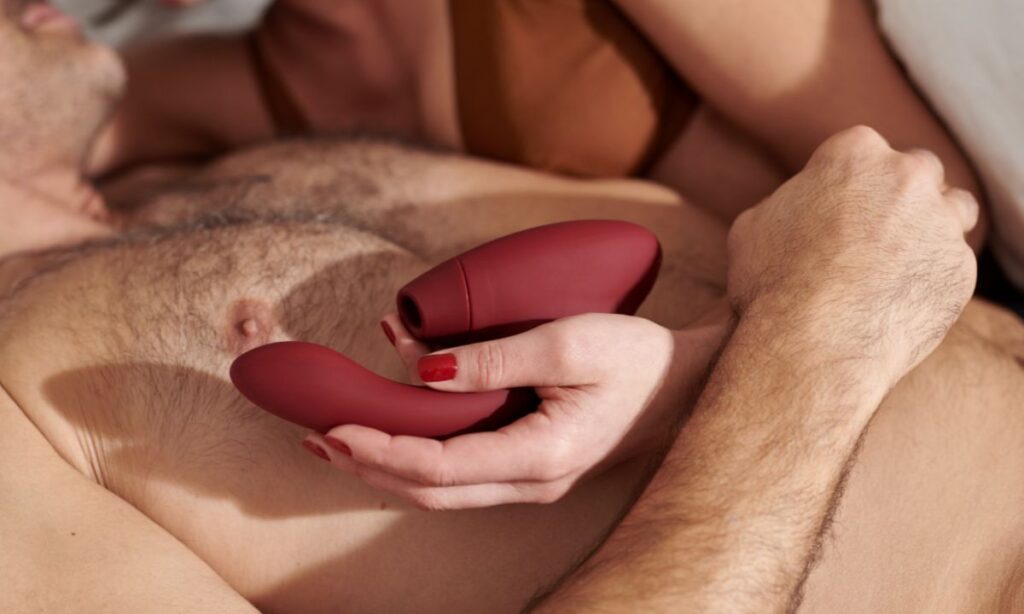Is It Possible To Get HIV By Using Sex Toys?
Sex toys are a fascinating addition to any bedroom repertoire. They're wonderful for trying out new styles of sex and getting acclimated to different kinds of stimulation. But do they put you at risk of sexually transmitted infections (STIs) if you use them with a partner? Let's find out.
How is HIV transmitted?
You can only obtain HIV if you come into close contact with specific bodily fluids from an HIV-positive individual with a detectable viral load. These fluids are as follows:
- Blood
- Pre-seminal fluid (pre-cum) and sperm (cum)
- Rectal liquids
- Fluids in the cervix
- Mother's milk
Having vaginal or anal intercourse with someone who has HIV without wearing a condom correctly every time or taking HIV prevention or treatment medications. Anal intercourse is more dangerous for HIV transmission than vaginal sex.
Anal intercourse is the most dangerous kind of sex for acquiring or transmitting HIV, and being the receptive partner (bottom) is more dangerous than being the insertive partner (top).
Vaginal sexual activity is less likely to transmit HIV than receptive anal sex. During vaginal intercourse, both you and your partner can get HIV. During vaginal intercourse, HIV can enter the body through the fragile tissue that borders the vagina and cervix. HIV can be transmitted through the hole at the tip of the penis (urethra); the foreskin if the penis isn't circumcised; or minor wounds, scratches, or open sores anyplace on the penis.
HIV can also be passed from mother to child during pregnancy, childbirth, or nursing. However, due to advances in HIV prevention and treatment, it is becoming less prevalent.
Other rare circumstances in which HIV can be transferred include:
Receiving HIV-infected blood transfusions, blood products, or organ/tissue transplants. Because of intensive testing of the blood supply and donated organs and tissues, the danger is exceedingly low these days.
Being bitten by an HIV-positive individual. Each of the few known occurrences had significant trauma, considerable tissue destruction, and the presence of blood. Contact between damaged skin, wounds, or mucous membranes with HIV-infected blood or bodily fluids can result in this unusual transmission. If the skin is not cut or injured, there is no chance of transmission. There have been no confirmed examples of HIV transmission by spitting since HIV cannot be spread through saliva.
Oral sexual contact has minimal to no risk of HIV infection or transmission. It is theoretically feasible if an HIV-positive male ejaculates in the mouth of his partner during oral sex. Oral ulcers, bleeding gums, vaginal sores, and the presence of other sexually transmitted diseases (STDs) that may or may not be apparent are all risk factors for HIV transmission during oral sex. However, the danger remains extremely low, far lower than with anal or vaginal intercourse.
Can you get HIV or STI diseases from sex toys?
While there hasn't been large-scale research on the transmission of STIs through sex toys, we do know that theoretically, the danger exists as long as there is an exchange of biological material, such as sperm or traces of blood.
With that in mind, it's reasonable to speculate that sex toys might spread STIs, however, some STIs may be more susceptible to transmission than others (for example, shigella, which is transmitted via infected faeces). All it takes is for an STI to be present in body fluid, come into touch with a sex item, and then be handled by someone who is STI-negative.
There is no danger of HIV transmission associated with using sex toys if they are not shared. Sex toys, on the other hand, are frequently used before or after other sexual acts. Any tissue injury or inflammation caused by sex toy use, such as fingering, fisting, and other kinds of play, might impact the risk of infection during other activities.
How long does an STI live externally?
Because STIs can't survive outside the body for long, there's almost little possibility of contracting one via a toilet seat (a widespread belief).
However, if you interchange sex toys between persons during intercourse (rather than using and changing condoms each time), the risk increases as bodily fluids are shared, especially if direct contact with the genitals or anus is involved.
How can I prevent getting HIV or other STIs?
There are several things you can do and be aware of to keep STI transmission to a minimum when using sex toys.
Keep your sex toys clean: When we say clean, we mean completely clean! If the toy comes with instructions, the easiest method to clean it should be hot soapy water, disinfectant wipes, or even the dishwasher (yes, some sex toys are dishwasher safe!). When washing with soap, choose unscented items because fragrant products may irritate the skin.
Get some lubrication: When using a sex toy, especially for anal play, use plenty of lube. This will minimize friction and prevent skin tearing while improving your pleasure. Consider the sort of lubrication you use as well; for example, some silicone-based lubes might cause the toy to degrade when used with silicone toys.
If you're sharing, use condoms: Just as condoms may help stop the transmission of STIs when worn on a penis, they can also help prevent the transmission of STIs on sex toys. Importantly, if you change individuals or holes, you must use a fresh condom. If you're using a sex toy that isn't exactly suited for a condom (such as some varieties of anal beads), consider only using your own, separate toys, or properly washing and drying them between usage.
Consider reviews and buy from renowned sex toy shops: When you're putting anything into your body, you want to be sure it's safe while also providing the user experience you're looking for. Find out whether the sex toy you want has any internet reviews. If a product has positive online user evaluations and can be purchased from a trusted source, it is more likely to be of higher quality.

